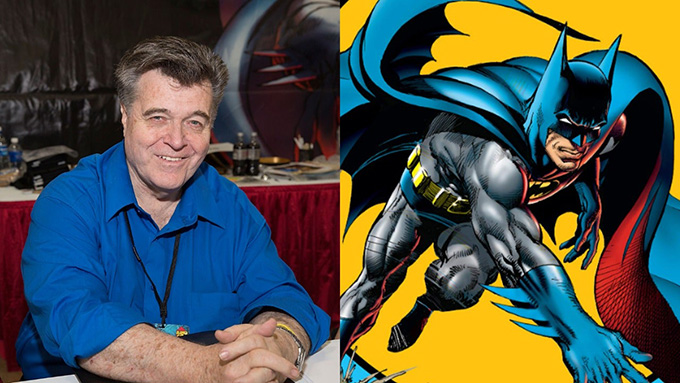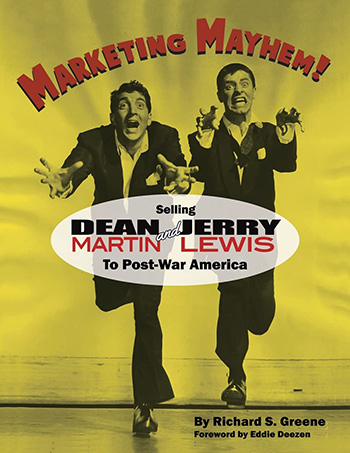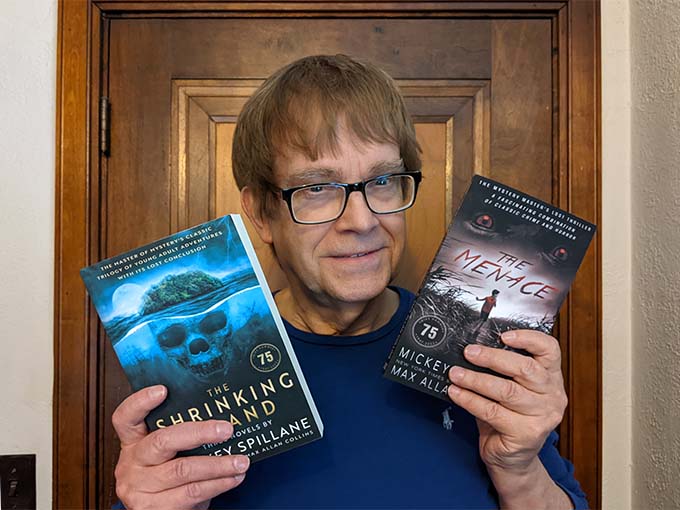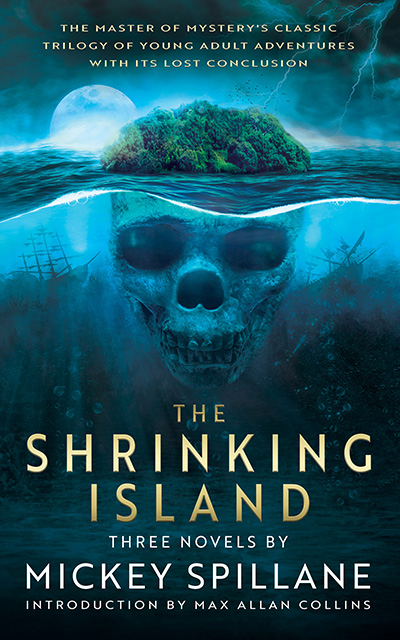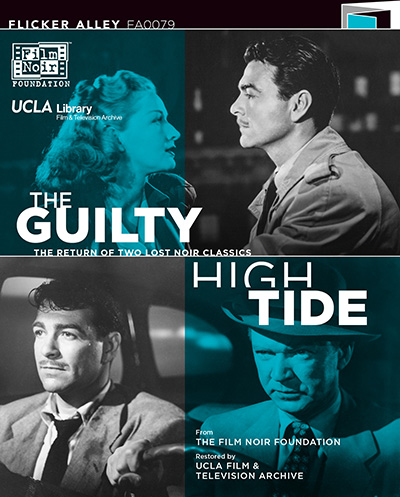
My pal Eddie Muller, the guru of all things noir, has outdone himself with the latest Flicker Alley home video release from the Film Noir Foundation. Beautifully restored as usual by the UCLA Film & Television Archive, Eddie’s first double feature on Blu-ray/DVD is The Guilty/High Tide, both 1947 releases from (of all people) producer Jack Wrather of early TV’s Lone Ranger and Lassie (!) fame.
What makes the disc a noir fan’s feast are the special features, many of which are the work of film expert Alan K. Rode, including documentaries on Wrather (and his actress wife Bonita Granville, star of The Guilty), Cornell Woolrich, and director John Reinhardt. The standout special feature for me, however, is Lee Tracy: The Fastest Mouth in the West from charming, articulate noir historian Imogen Sara Smith.
Lee Tracy is a nearly forgotten movie (and stage) star of the 1930s who has long been a favorite of mine. He defined the Hildy Johnson character in The Front Page on Broadway. He didn’t play the role on screen (Pat O’Brien did) but he went on to be the prototypical fast-talking, rule-bending, hard-drinking, sleazy-but-winning media-man of pre-Code Hollywood. He is remembered, if at all, for his most enduring films, Doctor X, Dinner at Eight, and Bombshell. He made a late career comeback on Broadway and in the film version of Gore Vidal’s The Best Man (1964), playing a Truman-esque ex-president turned power broker – he got an Academy Award nomination for that. A terrific film, by the way.
His career downfall in the mid-‘30s came when he supposedly urinated from a balcony onto a passing parade of Mexican soldiers (he was making Viva Villa!). He was apparently as hard-living and hard-drinking as the characters he portrayed. For me, he’s a unique figure, fast-talking and oddly charismatic despite a face that looks like a sack of potatoes wearing a sly smile. He is pre-Code Hollywood wrapped up in one balcony-pissing package.
Eddie Muller, who participates in several of the documentaries and delivers his usual fine introduction to the films, is more impressed with The Guilty than with the Lee Tracy-dominant High Tide. The Guilty is definitely worthwhile, an Ulmer-esque exercise in making something out of nothing, budget-wise.
The Guilty is also one of the best translations of the mood of writer Cornell Woolrich to the screen. Rear Window is obviously – I’m no genius pointing this out – superior; but then so is The Window with Ed Gorman’s first cousin Bobby Driscoll and Phantom Lady and on and on. What The Guilty has, besides cannily used shabby sets, is its doomed lead actor, Don Castle – who is also in the Woolrich-based I Wouldn’t Be in Your Shoes (1948) and of course High Tide. Castle rivals Tom Neal for sad irony in his real life, ending a suicide.
I will state, at risk of losing whatever noir credentials I have, that I am not in particular a fan of Woolrich’s writing. He was justifiably famed for his ability to come up with one resonant noir premise after another; but as a writer he did not do much for me. I once was hired to write a screenplay from a novel of his (never made) and was not impressed with the craftsmanship. This is a matter of taste and I acknowledge his importance on a very short list that includes Hammett, Chandler, James M. Cain, Horace McCoy, Mickey Spillane, and Jim Thompson.
The sadness and threadbare nature of Woolrich’s life is well-served by The Guilty, but for this fan of actor Lee Tracy, High Tide (with which I was already familiar) is the gem of this rhinestone-glittering package. Like The Guilty (and I Wouldn’t Be in Your Shoes) it’s from Monogram. I once had Nate Heller say, “The night was as starless as a movie from Monogram.” But Lee Tracy must have slipped my mind. Typically, in both The Guilty and High Tide, Regis Toomey shows up as essentially the same plainclothes police inspector (he has that role in I Wouldn’t Be in Your Shoes, too, more centrally).
High Tide has a wraparound right out of Double Indemnity and a bigger budget than The Guilty (considering it’s Monogram, nothing to brag about) but it serves as a coda, or even valedictory, for Lee Tracy’s fast-talking, rule-breaking reporter, a figure recognizably American, at once admirable and shameful.
Tracy was no longer A-list in 1947 and hadn’t been for well over a decade; he was making the occasional B picture. He would soon gain a slight, tenuous hold on noir history by way of starring in the first really successful tough private eye series, Martin Kane. Surviving examples of this early ‘50s show are fascinating artifacts of live TV. But in High Tide the actor brings his trademark persona fully into the bleak world of film noir, where leads are played by the doomed likes of Castle and Neal. He fits in well but flies much higher on his way to High Tide’s splash landing.
Thank you, Eddie Muller, Alan Rode, Woolrich documentarian Steven Smith, and especially Imogan Sara Smith, for her wonderful career piece on Lee Tracy.
In the meantime, I am preparing to do the commentary for ClassicFlix’s I, the Jury release this coming September. It’s going to be really something – a package including 4K, Blu-ray and 3-D. Preparing for my work, I have watched a 3-D advance disc of the 1953 film and was again blown away by John Alton’s cinematography.
I have always liked this film – it was my first introduction to Mike Hammer, seen on a very small black-and-white TV around 1955 – and I know that some people don’t accept Biff Elliot as Mike Hammer. Mickey didn’t, and he’s not alone. But I find Biff’s take on Hammer as a young, not terribly bright combat veteran, out to avenge the guy who lost an arm to a Japanese bayonet meant for him, both appropriate and effective – burly but not a bully. The flaws in the film mostly have to do with censorship issues – the truncated striptease at the conclusion particularly, but also the lengths the script has to go to, to avoid directly mentioning prostitution and dope dealing.
I will talk more about this later, but anyone interested in Mickey Spillane and Mike Hammer…really, any film noir fan…will find the Classicflix I, the Jury on a short list of best Blu-rays of the year, including no doubt The Guilty/High Tide.
Elsewhere on the Spillane front, I am working on the galley proofs of Spillane – King of Pulp Fiction, and find myself very pleased. It was a big, hard job – Jim Traylor and I have been seriously working on this project since shortly after Mickey’s passing in 2006 – and I am relieved to find that I like the result. Jim is working on the index of the 350-page book right now.
I am thrilled that Mysterious Press is the publisher. It’s a classy imprimatur that I think this book deserves.
Our first post-Covid lockdown walk-out on a movie: Jurassic World: Dominion. The dinosaurs were believable, but the people were not. Just a dreadful, dull script with brain-numbing dialogue. I had thought this would be a nice melding of characters from the previous entries in the saga, but (for the hour-plus we witnessed) they rarely interacted.
We saw it in 3D that was barely noticeable (but for the upcharge). I was tempted to stay and watch at least some of the actors get eaten, but Barb was fed up.
I will say I thought the overhead sound conveying the prehistoric creatures grazing and grunting was effective until I realized it was just the other moviegoers.
On a more positive note, several of the limited-run TV series we’ve been watching have wrapped up satisfyingly, particularly Gaslit and (an episode to go) the delightful The Offer (I recommend supplementing the series with the behind-the-scenes Godfather book, Leave the Gun, Take the Cannoli by Mark Seal). HBO’s The Staircase remained compelling viewing in its final episode, but as it’s credited with being based on the French documentary of the same name, one does wonder where material not seen in the doc came from. Some of it seems unfair to all concerned. Anyway, that owl did it.
Finally, it’s another article about that Tom Hanks movie that you didn’t realize came from a graphic novel.
M.A.C.

